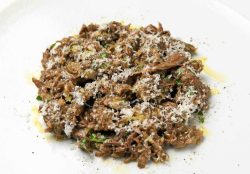Sasebo Restaurant Serves Vegetable Noodle Dish Topped with Raw Egg; Popular with Locals for Roughly 50 Years

Marutomi Champon with a raw egg on top
16:00 JST, February 11, 2024
SASEBO, Nagasaki — The city of Sasebo has developed alongside its former naval port since the Meiji era (1868-1912). I rode a train on the Matsuura Railway that departed from JR Sasebo Station and headed toward the mountains. The trip took about 30 minutes as I made my way to Marutomi Shokudo, a restaurant run by Tomie Sanabe, 84.
The small restaurant is located near Kamiainoura Station in a quiet residential area that, unlike Sasebo, does not have a seaside atmosphere.
As I walked toward the restaurant, a signboard stood out that had a drawing of a cute elderly woman and the words “Grandma’s Set Meals.” Upon entering the restaurant, I was greeted by the owner, who looked exactly like the drawing.
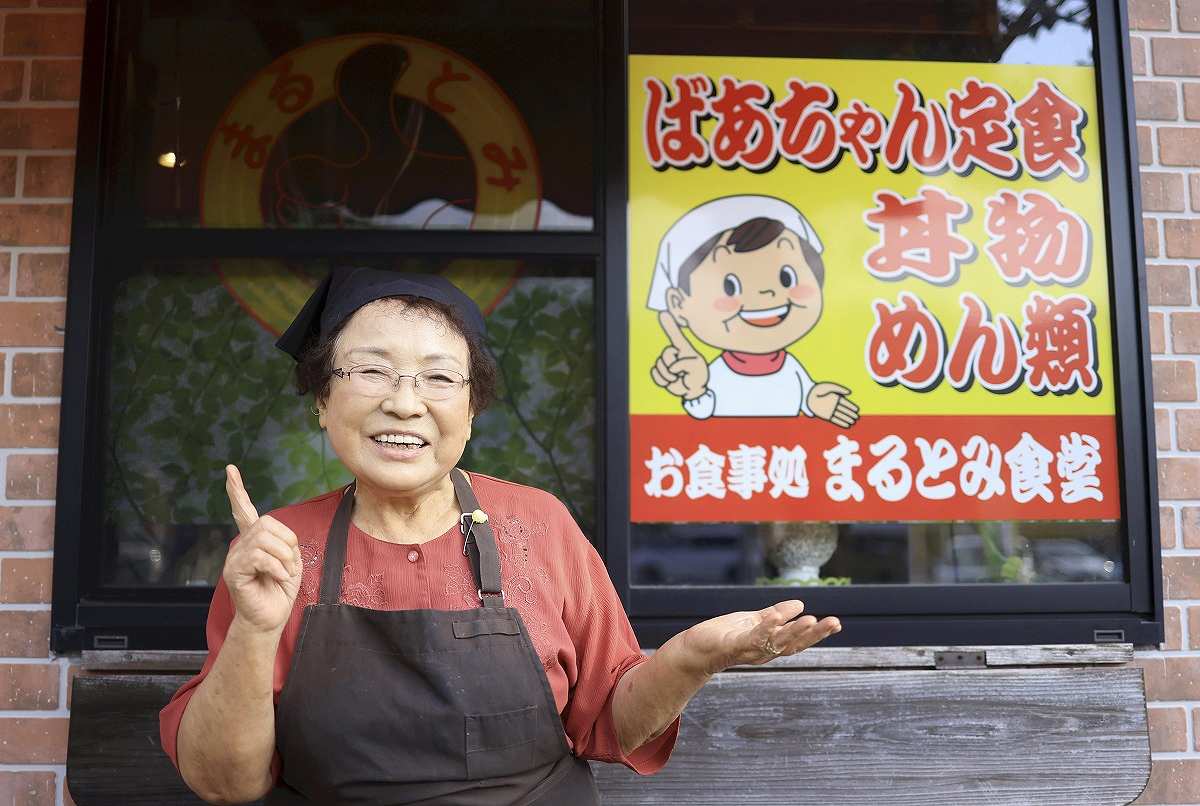
Tomie Sanabe poses in the same way as a drawing of a woman on the signboard for Marutomi Shokudo in Sasebo, Nagasaki Prefecture.
The restaurant is best-known for its noodle dish Marutomi Champon, priced at ¥750.
The dish is served in a large bowl with heaps of cabbage and negi leek and topped with a raw egg and black pepper. I sipped the broth first, letting myself savor the sweetness of the vegetables. Then, I broke the egg, let it fall on the noodles and crunchy vegetables and started to eat. Every bite made me happier.
The soup is made from chicken bones and is sometimes cooked for more than four hours with onions and carrots.
The restaurant has about 30 seats and was almost full at lunchtime. About half of the customers ordered the champon noodles.
A man his 60s who worked at a nearby housing construction site ate his champon with gusto and left the restaurant with a satisfied look, saying, “All those vegetables left me feeling so full.”
Working hard every day
Sanabe opened the restaurant at the suggestion of her husband, Hideo.
Hideo worked as a fisherman in Nagasaki Prefecture and after they married, they planned to live in his parents’ house. But Hideo fell out with his family and the couple moved to Sasebo. After living in Aichi Prefecture for 10 years, they returned to Nagasaki Prefecture and settled where the restaurant is now located.
Hideo started peddling fish to make a living. It was 1974, the middle of the economic slump caused by the first oil crisis. Fish did not sell well.
Troubled by the unsold fish, Hideo asked Sanabe to open a restaurant that served set meals. Although she had hardly ever eaten out, Sanabe opened the small restaurant with a single table with four seats in a section of their house.
Fortunately, the restaurant thrived as there were no other restaurants around.
“I worked hard every day,” she recalls. The restaurant’s business hours were from the morning until around 10 p.m., and afterwards she usually made dried fish from the unsold ones. She worked 18 hours a day.
A few years later, a pachinko parlor opened next door and the restaurant became even busier. It was renovated many times and the menu was expanded.
Champon was one of the items added to the menu.
To my surprise, Sanabe says that she had never eaten champon in any restaurant, nor had she ever learned how to make it. She decided on its flavor based on her simple knowledge of the dish, that is, “it has plenty of vegetables,” combined with the opinions of customers.
The key ingredient is the egg on top. The idea came from what her father told her about the champon he had eaten outside of the prefecture.
Late husband fixed wok
Though the restaurant was thriving, Hideo’s fish peddling business was under threat, partly from the opening of more and more supermarkets. They often argued at home.
“We sometimes broke champon bowls during fights,” Sanabe said with a bitter smile. “I had to buy new bowls every time.”
Hideo died in 2013. Sanabe still uses the wok with the handle that her husband repaired. In fact, he repaired it many times, saying to Sanabe, “We have to take good care of things and use them for a long time.”
For each order of champon, Sanabe vigorously fries vegetables in the wok. The secret of making good champon is to cook it over a high flame that even reaches over your head. Now, she cooks while standing on a low stool as she has shrunk with age.
“I’m now the same age as when my husband died,” she said. “Every day, I put my hands together at the Buddhist altar at home and say in my mind, ‘I can still work hard, so cheer me on. I’m not ready to join you.’”
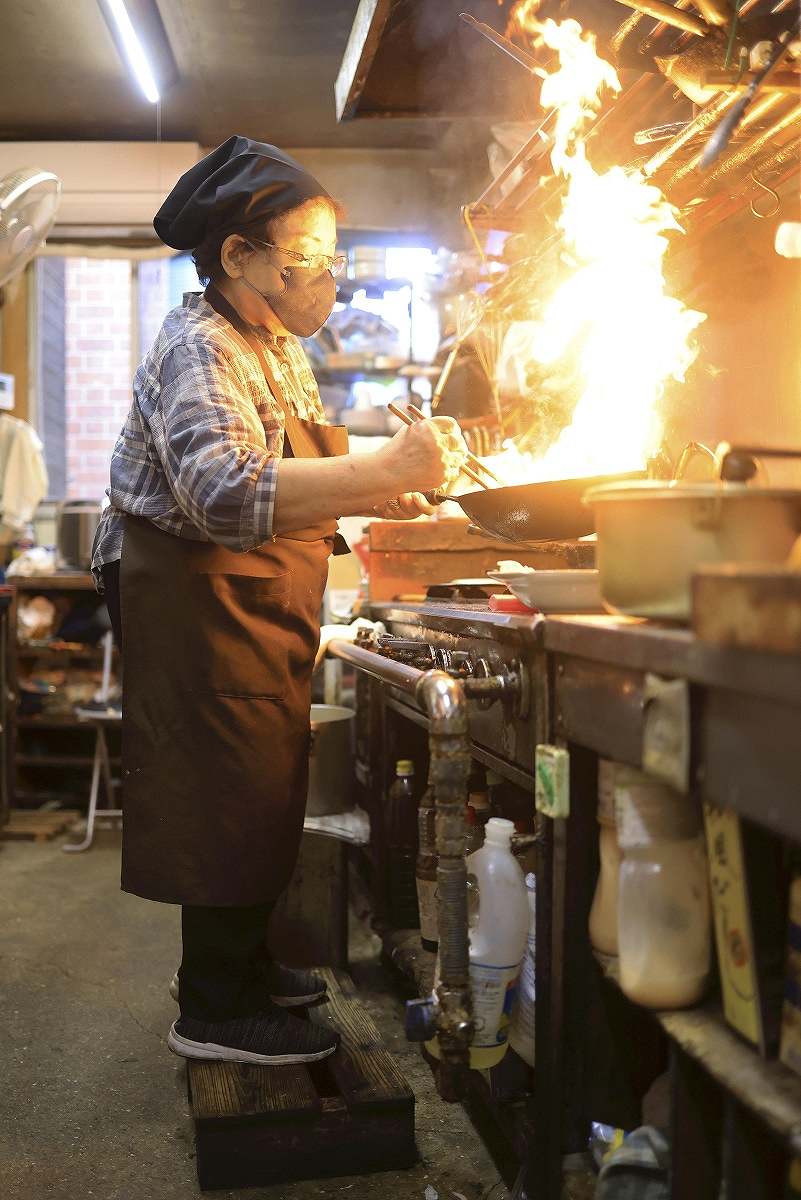
Sanabe cooks while standing on a low stool as she has shrunk with age.
She temporarily closed the restaurant because of the COVID-19 crisis and due to her knee surgery. When she reopened the restaurant, her regular customers returned and said, “Your food is delicious as always.”
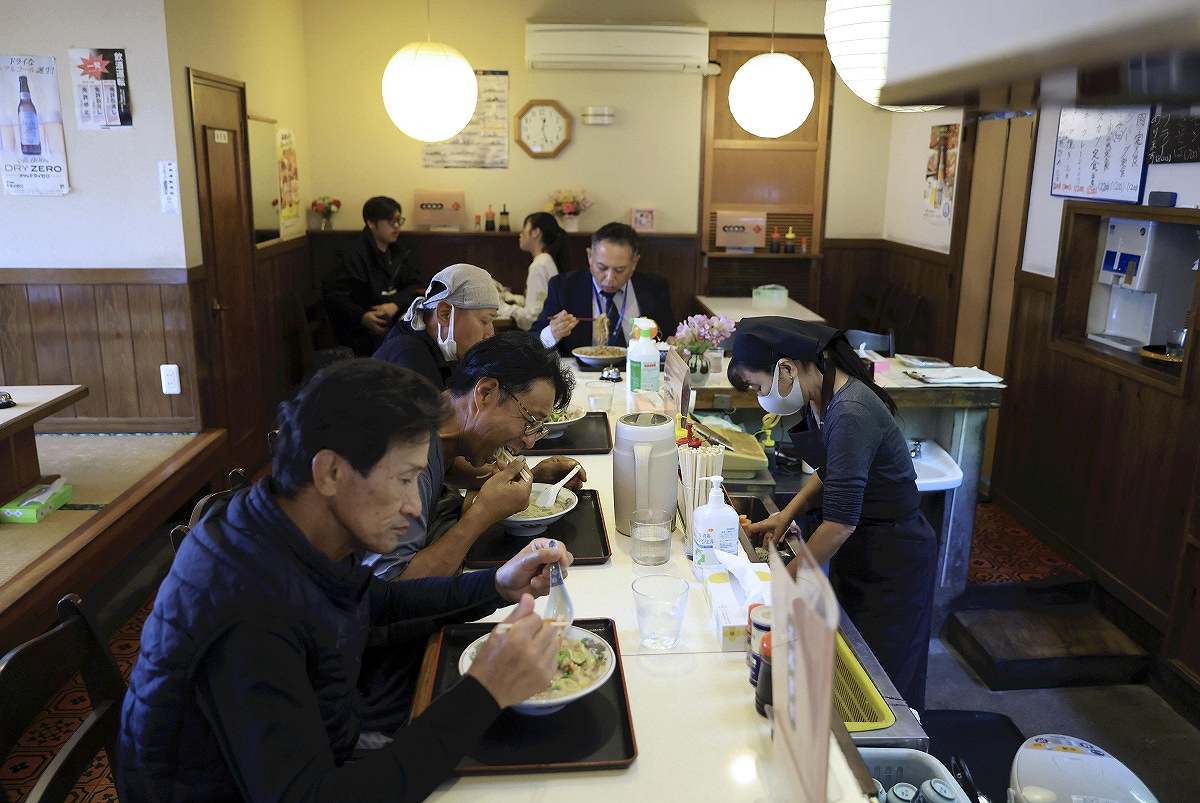
The restaurant’s lunchtime rush
The restaurant was started at Hideo’s suggestion. Sanabe is grateful that he allowed her to continue to run it for so many years.
“I was so busy every day that I didn’t pay much attention to him. Maybe he felt a bit lonely,” she said with an embarrassed smile.
“I have worked throughout my entire life,” Sanabe remarked. “It’s the only thing I know. I have nothing else to do.”
I felt that Sanabe overcame her difficulties with her strong personality and bright smile, which warmed my heart as well.
"Features" POPULAR ARTICLE
-

Sanrio to Open Museum in Yamanashi Pref. Dedicated to Founder, Exhibits Include Hello Kitty, Other Characters
-
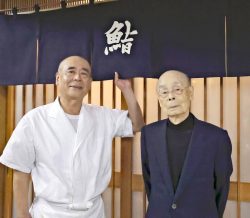
Legendary Sushi Chef Jiro Ono Turns 100: ‘I Have No Regrets’
-

Autumn Foliage Surrounds Visitors to Tokyo’s Showa Kinen Park
-

My Daughter No Longer Speaks to Me, But I Want to See Her and My Grandchild
-

Kumamoto: Public Bath Refurbished as Library Where You Can Chat, Take Photos
JN ACCESS RANKING
-

Keidanren Chairman Yoshinobu Tsutsui Visits Kashiwazaki-Kariwa Nuclear Power Plant; Inspects New Emergency Safety System
-

Imports of Rare Earths from China Facing Delays, May Be Caused by Deterioration of Japan-China Relations
-

University of Tokyo Professor Discusses Japanese Economic Security in Interview Ahead of Forum
-

Japan Pulls out of Vietnam Nuclear Project, Complicating Hanoi’s Power Plans
-

Govt Aims to Expand NISA Program Lineup, Abolish Age Restriction





